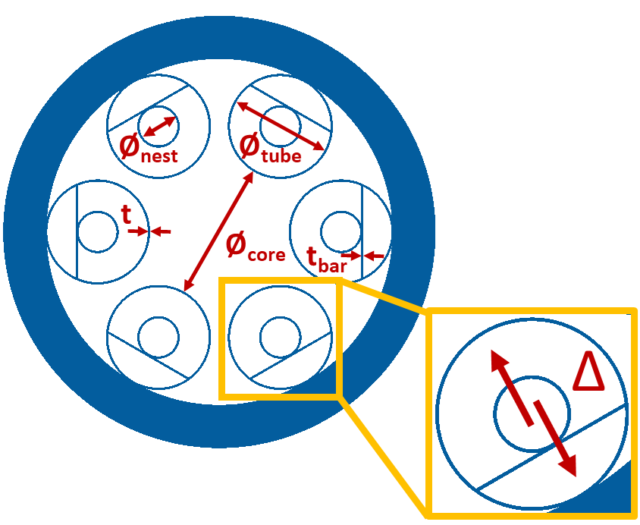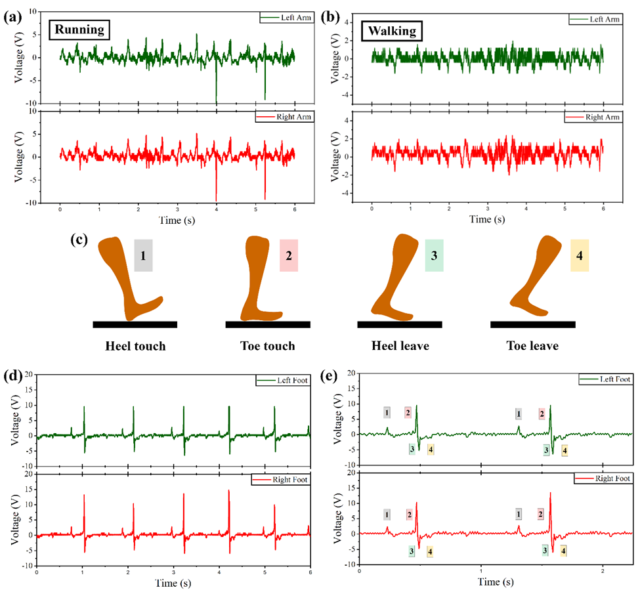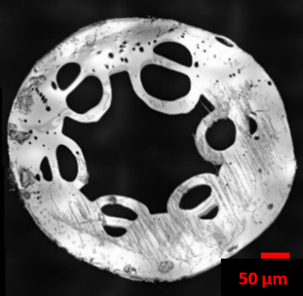The research activities at CFL are focused in four main topics:
1. Hollow-core optical fibers (HCF)
 We are interested in developing new HC-PCFs that can be used for light transmission in different spectra. Further, the manipulation of the transmission characteristics of HC-PCFs leads to sensing molecules and living cells by these fibers. The microstructure of the fibers are designed with the help of simulations, and the fibers are drawn in the draw tower at UNAM. The optical characterization is done based on the design wavelength and criteria. Light transmission from visible to mid-infrared regions is possible with our HC-PCFs. The above photo shows the cross-section of an eight-tube hollow-core design. Below, is the COMSOL simulations on our novel design, NC-NCF, showing the field profile of three different modes, namely, HE11, TE01 and TM01.
We are interested in developing new HC-PCFs that can be used for light transmission in different spectra. Further, the manipulation of the transmission characteristics of HC-PCFs leads to sensing molecules and living cells by these fibers. The microstructure of the fibers are designed with the help of simulations, and the fibers are drawn in the draw tower at UNAM. The optical characterization is done based on the design wavelength and criteria. Light transmission from visible to mid-infrared regions is possible with our HC-PCFs. The above photo shows the cross-section of an eight-tube hollow-core design. Below, is the COMSOL simulations on our novel design, NC-NCF, showing the field profile of three different modes, namely, HE11, TE01 and TM01.


Ordu, M. and Akosman, A.E., 2022. Re-thinking the design of low-loss hollow-core fibers via optimal positioning of the nested elements. Optics Letters, 47(12), pp.3039-3042.
Khan, A. and Ordu, M., 2023. Mid-infrared negative curvature hollow-core fiber with elliptically nested tubular structure. Optics Communications, 531, p.129227.
2. Fibers for wearable technologies


Polymer fibers are great candidates for flexible electronics and wearable applications. These fibers can be designed with piezoelectric/triboelectric properties for self-powered sensors and energy harvesting. In our laboratory, we develop 2D material embedded polymer fibers for high performance piezoelectric/triboelectric applications, including energy harvesting, biomotion analysis and monitoring of vital signs.

Hasan, M.M., Sadeque, M.S.B., Albasar, I., Pecenek, H., Dokan, F.K., Onses, M.S. and Ordu, M., 2023. Scalable Fabrication of MXene‐PVDF Nanocomposite Triboelectric Fibers via Thermal Drawing. Small, 19(6), p.2206107.
3. Polymer optical fibers
Polymers as fiber materials are great alternatives to glasses for their favorable mechanical properties such as flexibility and impact resistance. Microstructuring the polymers optical fibers also creates hollow-core photonic crystal fibers that allow light guidance through the air. Here, we are working on the development of novel microstructured polymer optical fibers for optical communication, biological sensing and illumination purposes. This includes modelling, drawing and characterizing of the fibers.

Rahman, M., & Ordu, M. (2023). Long-length 3D printed hollow-core polymer optical fiber for wideband light guidance. Optical Fiber Technology, 81, 103512.
4. Glass fibers as composites

Glass fibers are critical not only for telecommunication but also for composite materials. They have been used for many industrial applications such as wind turbines, automobiles and aircrafts. Improving their mechanical properties will expand the capabilities with glass fiber composites. We are using nanoparticles to enhance their mechanical properties.
Behboud, A.B., Ahmed, M.K., Kurucu, A., Çömlekçi, G.K. and Ordu, M., 2023. Zirconia nanoparticle coating for high-strength and alkali-resistant glass fibers. Journal of Non-Crystalline Solids, 619, p.122571.
5. Semiconductor-core infrared fibers

Semiconductor-core glass-cladded fibers have been proposed during the mid-2000s and have gained strong attention due to their capability of infrared transmission and high nonlinearity. Our semiconductor-core fibers have been tested in the infrared region and have shown promising results. The cross-section of a Ge-core borosilicate glass-cladded fiber can be seen in the above optical micrograph. We would like to integrate these fibers with HC-PCFs to create “Hybrid fibers”.
Ordu, M., Guo, J., Tai, B., Hong, M.K., Erramilli, S., Ramachandran, S. and Basu, S.N., 2017. Mid-infrared transmission through germanium-core borosilicate glass-clad semiconductor fibers. Optical Materials Express, 7(9), pp.3107-3115.
Funded projects
10. TUBITAK 1001, “Development of 2-dimensional material integrated polymeric nanocomposite fiber based piezoelectric nanogenerators”, (09/2025-ongoing)
9. TUBITAK 3501, “Thermally drawn piezoelectric fibers as adaptive tactile sensor for prosthetics”, PI: Vishwa Pratap Singh, Advisor: Mustafa Ordu (08/2025-ongoing)
8. TUBITAK 1001, “Energy harvesting by nanomaterial embedded triboelectric-piezoelectric hybrid fibers”, (02/2024-ongoing)
7. TUBITAK BIGG startup funding, “İnsan hareketliliğini takip eden giyilebilir fiber sensör”, (02/2024-02/2025)), completed.
6. TUBITAK 2544 Turkiye-Japan bilateral research program “Creation of Innovative Ultra-Low-Loss Microstructured Polymer Optical Fibers for Next-Generation Terahertz Wireless Communication” (05/2023-04/2025)), completed.
5. TUBITAK 1004-P5, “Reinforced glass fiber technologies“, (02/2021-02/2025), completed.
4. TUSAŞ University-industry collaboration “Development of high purity glass fibers for composites” (06/2022-31.08.2024), completed.
3. TUBITAK 1001, “Development of low-loss micro-structured polymer optical fibers for biological detection“, (01/2021-03/2024), completed.
2. TUSAŞ University-industry collaboration “Optical characterization of transparent aviation polymers” (11/2022-11/2023), completed.
1. TUBITAK 3501, “The design, fabrication and optic/mechanic characterization of chalcogenide coated hollow-core photonic crystal fibers“, (09/2020-03/2023), completed.
1001: The Scientific and Technological Research Projects Funding Program
1004: Center of Excellence Support Program
3501: Career Development Program
